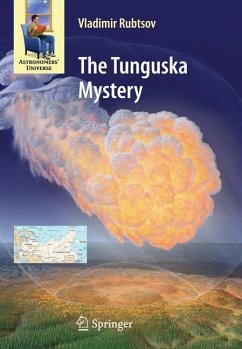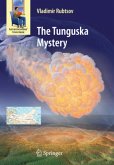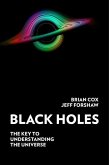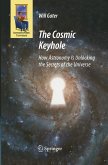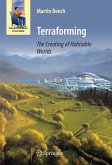This objective study examines the many-sided Tunguska phenomenon, the explosive event in the USSR that cannot be explained by simple meteoric models. The author sets out the progress made in researching the event and deals with the UFO myths surrounding it.
The purpose of the book is a dual one: to detail the nature and results of Tunguska investigations in the former USSR and present-day CIS, and to destroy two long-standing myths still held in the West. The first concerns alleged "final solutions" that have ostensibly been found in Russia or elsewhere. The second concerns the mistaken belief that there has been little or no progress in understanding the nature of the Tunguska phenomenon. All this is treated by the author in a scholarly and responsible manner. Although the book does present certain unusual findings of Russian and Ukrainian scholars, it is important to stress that this is not a sensational book; it is, rather, a serious exposition of the results of rational investigations into a difficult scientific problem. We are demonstrating the true complexity of the problem that is now entering its second century of existence. Simple meteoritic models cannot explain all the characteristics of this complicated event, and therefore certain so-called "unconventional hypotheses" about the nature of the Tunguska explosion are to be considered as well.
The purpose of the book is a dual one: to detail the nature and results of Tunguska investigations in the former USSR and present-day CIS, and to destroy two long-standing myths still held in the West. The first concerns alleged "final solutions" that have ostensibly been found in Russia or elsewhere. The second concerns the mistaken belief that there has been little or no progress in understanding the nature of the Tunguska phenomenon. All this is treated by the author in a scholarly and responsible manner. Although the book does present certain unusual findings of Russian and Ukrainian scholars, it is important to stress that this is not a sensational book; it is, rather, a serious exposition of the results of rational investigations into a difficult scientific problem. We are demonstrating the true complexity of the problem that is now entering its second century of existence. Simple meteoritic models cannot explain all the characteristics of this complicated event, and therefore certain so-called "unconventional hypotheses" about the nature of the Tunguska explosion are to be considered as well.
From the reviews:
"The book is a good read. It style is chatty, with entertaining anecdotes. It is nicely produced, with clear maps and diagrams ... extensive references and a helpful index." (Times Higher Education, January, 2010)
"Vladimir Rubtsov has clearly spent an enormous amount of time researching the event, delving into eyewitness accounts and scientific publications alike, and documenting the many excursions made to the epicentre of the blast ... which were made in an attempt to find fragments of the exploding body. ... throughout he presents an unbiased account of all lines of investigation that have occurred to the present day, allowing the reader to draw their own conclusions." (Emily Baldwin, Astronomy Now, February, 2010)
"In this authoritative and engaging account, the Russian scientist and philosopher Vladimir Rubtsov - a longtime participant in the Tunguska debate - offers few definitive answers ... . he provides a compelling account of how the scientific complexity of the Tunguska problem has combined with various external difficulties - including two world wars and decades of Soviet dysfunction - to create a riddle that still defies solution after more than a century of research." (Physics World, February, 2010)
"Vladimir Rubtsov gives a sober account of this extraordinary event, clearly debunking myths while emphasising the unknowns. ... Rubstov draws attention to strange lights seen in the sky for days before the impact, comparing them with similar observations in 1910 ... . An instructive read about an enduring mystery." (Stuart Clark, Physics World, February, 2010)
"This book is a history of scientific investigations of the 1908 Tunguska event in the former Soviet Union. ... The book's interesting content combined with its low price and high-quality paper makes it a worthwhile purchase. Summing Up: Recommended. Academic, professional, and public libraries, all levels." (M.S. Field, Choice, Vol. 47 (7), March, 2010)
"The most thorough English-language examinations of the little-understood Tunguska event of June 30, 1908-the devastating aerial explosion over the Siberian forest ... . analyzes the extensive Russian research ... from the first Soviet expedition in 1921 to a series of centennial conferences in 2008 and looks at the anomalies atmospheric phenomena both before and after the event, the atypical features of the aerial object seen by some 500." (C&RL News, December, 2010)
"The book is a good read. It style is chatty, with entertaining anecdotes. It is nicely produced, with clear maps and diagrams ... extensive references and a helpful index." (Times Higher Education, January, 2010)
"Vladimir Rubtsov has clearly spent an enormous amount of time researching the event, delving into eyewitness accounts and scientific publications alike, and documenting the many excursions made to the epicentre of the blast ... which were made in an attempt to find fragments of the exploding body. ... throughout he presents an unbiased account of all lines of investigation that have occurred to the present day, allowing the reader to draw their own conclusions." (Emily Baldwin, Astronomy Now, February, 2010)
"In this authoritative and engaging account, the Russian scientist and philosopher Vladimir Rubtsov - a longtime participant in the Tunguska debate - offers few definitive answers ... . he provides a compelling account of how the scientific complexity of the Tunguska problem has combined with various external difficulties - including two world wars and decades of Soviet dysfunction - to create a riddle that still defies solution after more than a century of research." (Physics World, February, 2010)
"Vladimir Rubtsov gives a sober account of this extraordinary event, clearly debunking myths while emphasising the unknowns. ... Rubstov draws attention to strange lights seen in the sky for days before the impact, comparing them with similar observations in 1910 ... . An instructive read about an enduring mystery." (Stuart Clark, Physics World, February, 2010)
"This book is a history of scientific investigations of the 1908 Tunguska event in the former Soviet Union. ... The book's interesting content combined with its low price and high-quality paper makes it a worthwhile purchase. Summing Up: Recommended. Academic, professional, and public libraries, all levels." (M.S. Field, Choice, Vol. 47 (7), March, 2010)
"The most thorough English-language examinations of the little-understood Tunguska event of June 30, 1908-the devastating aerial explosion over the Siberian forest ... . analyzes the extensive Russian research ... from the first Soviet expedition in 1921 to a series of centennial conferences in 2008 and looks at the anomalies atmospheric phenomena both before and after the event, the atypical features of the aerial object seen by some 500." (C&RL News, December, 2010)

